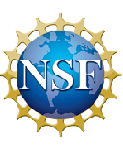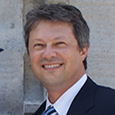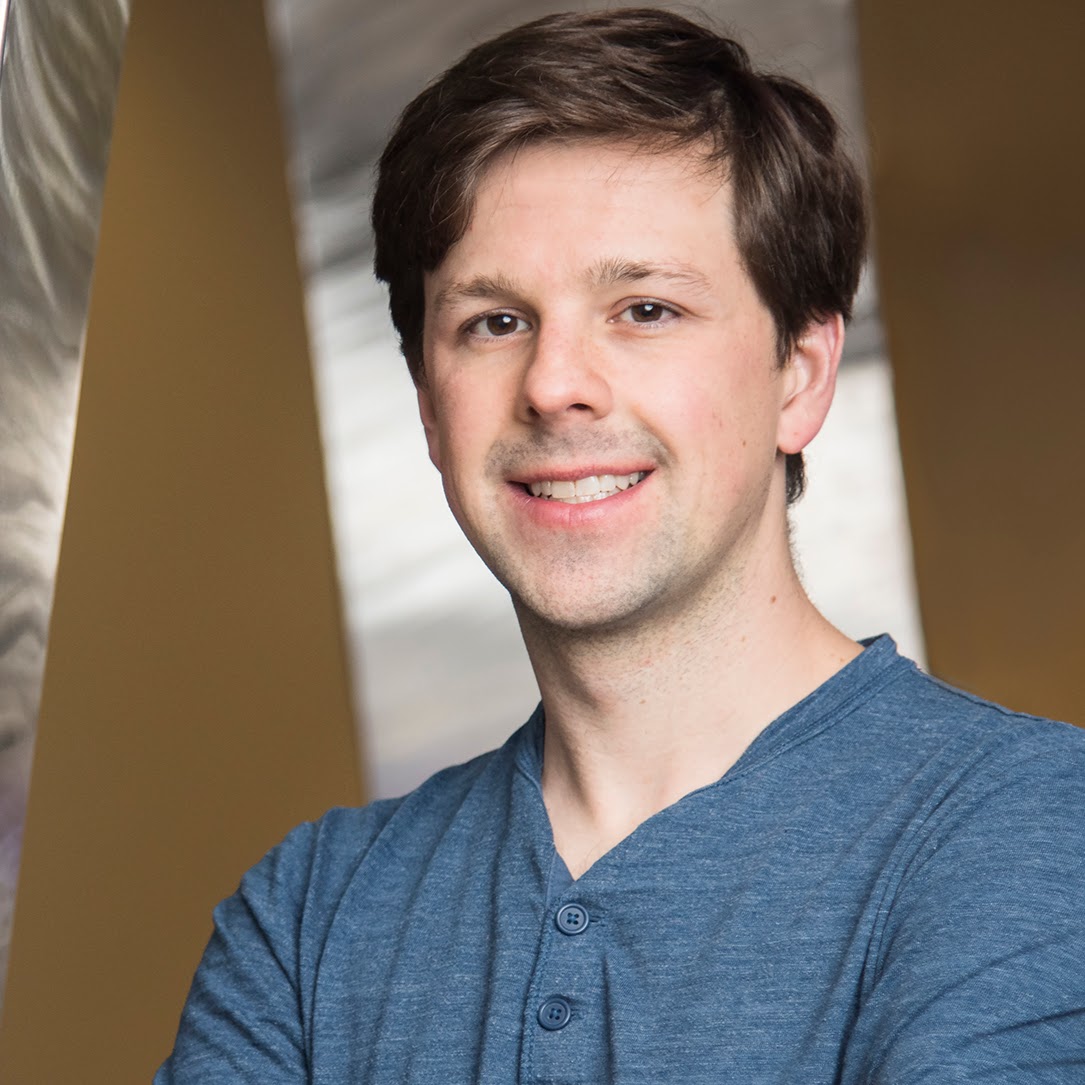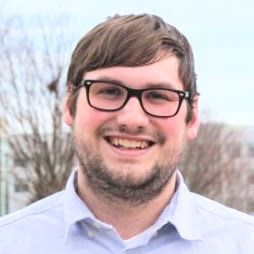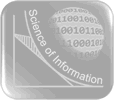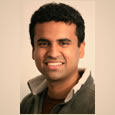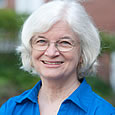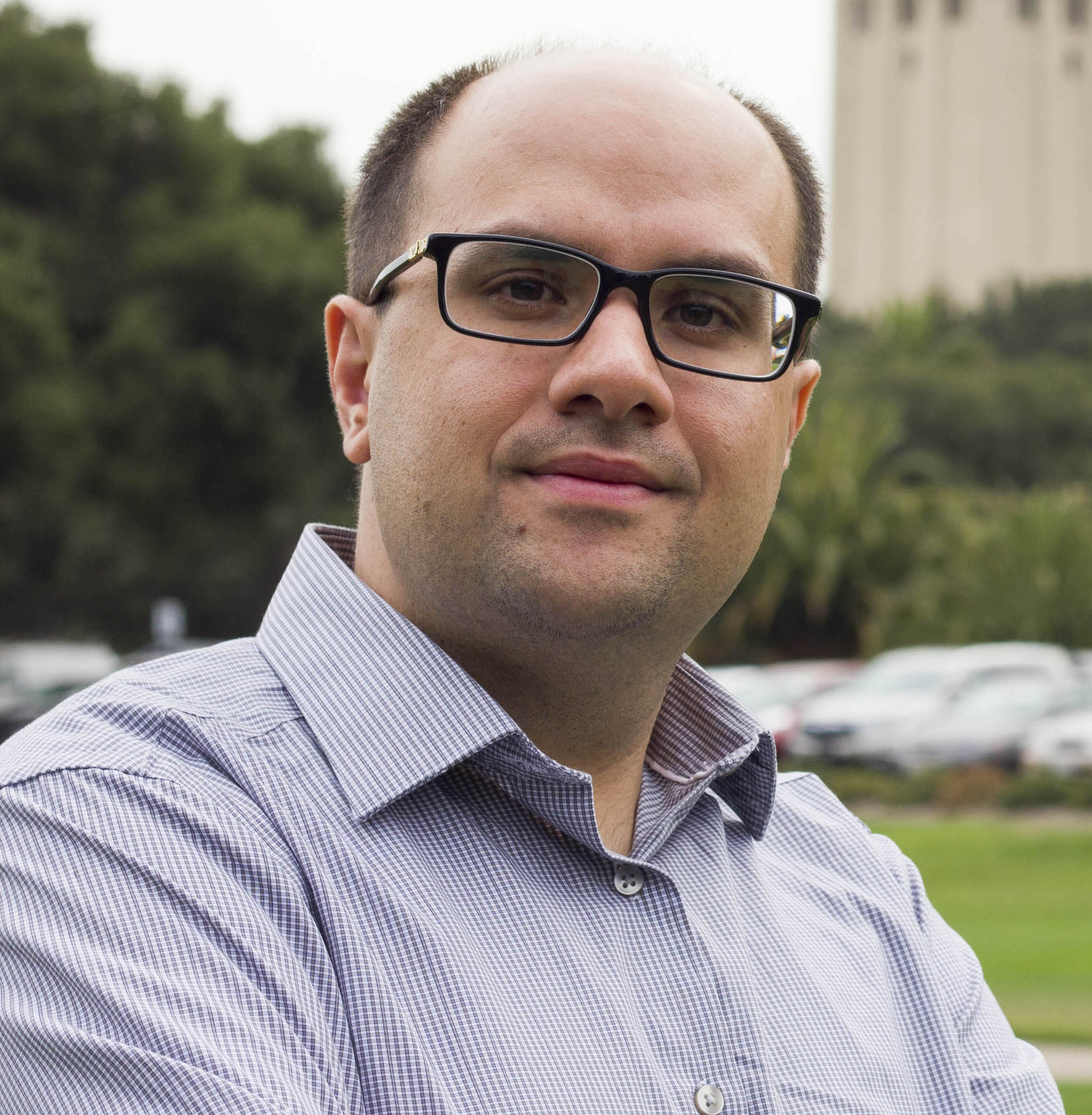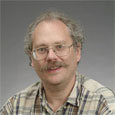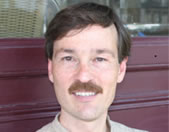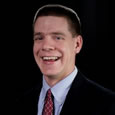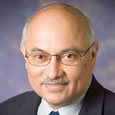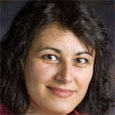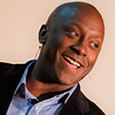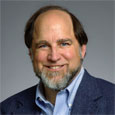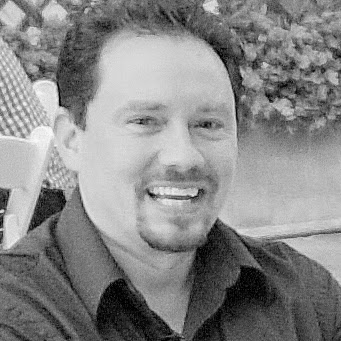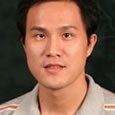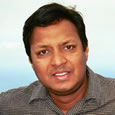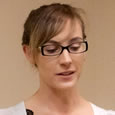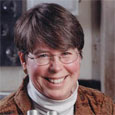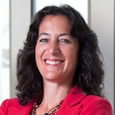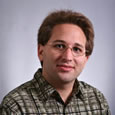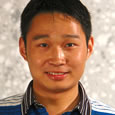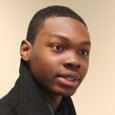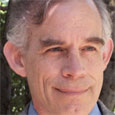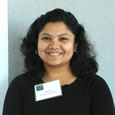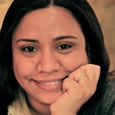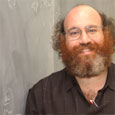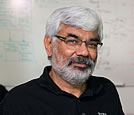-
Articles
-
These are articles written by CSoI staff or suggested by CSoI faculty because they highlight the Science of Information in some way.
-
Training Students Concurrently in Data Science and Team Science: Results and Lessons Learned from Multi-institutional Interdisciplinary Student-led Research Teams 2012-2018
Posted: Monday, July 1, 2019
Summary:Our engaged learning model of training provides diverse students with immediately usefuldata science skills, while learning to work in interdisciplinary, multi-institutional research ...
-
Frontiers of Science of Information: Shannon Meets Turing
Posted: Wednesday, January 24, 2018
The authors\u2019 vision for a Science of Information integrates key elements of Shannon and...
-
EEG Resolution and Beyond: Praveen Venkatesh Graduate Profile
Posted: Wednesday, December 20, 2017
by Gregory NahlikPraveen Venkatesh, a PhD candidate in Electrical and Computer Engineering at Carnegie Mellon University, has been w...
-
Undergrad Profile: Elizabeth Tigner
Posted: Friday, October 27, 2017
by Gregory NahlikPart-time undergraduate researcher and president of Purdue\u2019s Outing Club, Elizabeth Tigner is combining computer science with statistics and social sciences in her research. Although Eli...
-
Meet the Authors of a Mind at Play: How Claude Shannon Invented the Information Age
Posted: Thursday, July 6, 2017
"The spirit of Claude Shannonlooms large overIEEE Spectrum, and indeed the entire modern world. His 1937 demonstration that Boolean logic and algebra could be impl...
-
How to Grow Researchers: A Fresh Perspective on Graduate Student Collaboration
Posted: Wednesday, March 1, 2017
Luke Redington writes a short article on Center for Science of Information Education Director Brent Ladd and his understanding of graduate students and how he creates opportunities and environments to help them do ...
-
CSoI Participants Explore Boundaries of EEG Imaging
Posted: Friday, February 17, 2017
In the phys.org article "Innovation in brain imaging", CSoI participants Pulkit Grover andPraveen Venkatesh are highlighted for their work"
-
Purdue Profiles: David Gleich
Posted: Thursday, January 12, 2017
Excerpt:Somehow, David Gleich makes the world of algebra, algorithms and data sound like a lot of fun. A complete blast.That's completely because while he's doing work that would fog the minds of ...
-
Model sheds light on purpose of inhibitory neurons
Posted: Monday, January 9, 2017
Excerpt:Researchers at MIT\u2019s Computer Science and Artificial Intelligence Laboratory have developed a new computational model of a neural circuit in the brain, which could shed light on the biological ro...
-
Stanford Researchers Send Messages Using Household Chemicals
Posted: Monday, December 5, 2016
"Researchers have built a machine that sends messages using common chemicals. Among many potential applications, this system could relay secret messages or allow tiny devices to communicate inside the human body."
-
Relatively Simple Quantum Computers Could Be Much More Powerful Than Previously Realized
Posted: Friday, November 18, 2016
"Quantum computers promise huge speedups on some computational problems because they harness a strange physical property called entanglement, in which the physical state of one tiny particle depends on measurements...
-
MRI research: Listen to more podcasts\u2014they're good for your brain
Posted: Tuesday, October 25, 2016
"Listening to podcasts can do more than provide you with entertainment or information, according to a new study that says listening to them can stimulate activity across the brain."
-
Peer-to-Peer Mentoring: How It Fits into the Statistics Living Learning Community at Purdue
Posted: Friday, October 21, 2016
-
People of ACM - P.R. Kumar
Posted: Tuesday, October 4, 2016
An interview with CSoI founding member,University Distinguished Professor and College of Engineering Chair in Computer Engineering at Texas A&M University.
-
How DNA could store all the world\u2019s data
Posted: Wednesday, August 31, 2016
"Modern archiving technology cannot keep up with the growing tsunami of bits. But nature may hold an answer to that problem already."
-
Magic is in the Airwaves: An Interview with Andrea Goldsmith
Posted: Monday, May 16, 2016
If anyone has a crystal ball in which to see the future of wireless communications, it is Professor Andrea Goldsmith. In this interview, she mapped a future in which magic will happen everyday. Highways will monito...
-
Shor's Algorithm is Implemented Using Five Trapped Ions
Posted: Friday, March 4, 2016
"A quantum computer made of five trapped ions has been used by physicists in Austria and the US to implement Shor's factoring algorithm. While the system performed the trivial task of factoring the number 15, the r...
-
When Cryptographers Disagree
Posted: Thursday, March 3, 2016
"Six of the world\u2019s leading cryptography experts sat down this week to explore the most pressing issues in security. They took up topics ranging from whether Apple should facilitate the FBI\u2019s access to a known ...
-
Science of Information Summer School
Posted: Friday, July 31, 2015
White paper on the history and results of the Center's summer school.
-
The Sequence of Things to Come: An Interview with Wojciech Szpankowski about the Future of Information Science
Posted: Tuesday, October 28, 2014
Computers baffle me. For questions large and small\u2014from how to rid my screen of yet another pop-up ad to whether the advent of Heartbleed means I might as well tweet all my financial data\u2014I must ask others. Whe...
-
Postdoc Spotlight: Rui Ma
Posted: Wednesday, June 12, 2013
Rui; pronounced "Ray": My name is Rui Ma, I graduated from University of Illinois with a PhD in Neuroscience. My field was neurophysiology at the same time I got a master degree in applied mathematics. The ma...
-
Serving Women with a Purposeful Vision
Posted: Wednesday, April 3, 2013
For the March 2013 issue of IEEE Computer Special issue on Gender Diversity in Computing
-
Postdoc Spotlight: Sheila Rosenberg
Posted: Thursday, March 7, 2013
We sat down with Sheila Rosenberg during a break in the student-postdoc research workshop that took place in July 2012. This is what she had to say about her interactions with the Center.My name is Shelia ...
-
Postdoc Spotlight: Pulkit Grover
Posted: Wednesday, November 28, 2012
We sat down with Pulkit Grover during a break in the student-postdoc research workshop that took place in July 2012. Pulkit was a post-doctoral scholar at Stanford during the time of this interview. He is now an As...
-
Postdoc Spotlight: Tom Courtade
Posted: Wednesday, October 10, 2012
So certainly, I guess, one of the challenges is bringing together these people from various backgrounds, who speak, you know, different languages almost, with different terminology and everything. but I think the c...
-
A to Z Challenge 2012: Q is for Quantum Theology and Renaissance Woman Michelle Francl-Donnay
Posted: Tuesday, April 24, 2012
Except from blog:"I met Michelle Francl-Donnay, writer of Quantum Theology, in 2008, when she came to one of our craft shows. She was my first "from blog to real life" encounter. Michelle found S...
-
Beyond Shannon...Legacy
Posted: Tuesday, April 17, 2012
Information permeates everything: from electrochemical information exchanged in networks of neurons, to biological information stored, and processed in living cells, to business information, etc.
-
Can Wi-Fi and Mi-Fi get along?
Posted: Tuesday, April 17, 2012
"Proliferation of the mobile Wi-Fi gadgets spotted in Austin in public and in the workplace comprise a trend called "BYOD" \u2014 Bring Your Own Device. The term has special significance for conferences like SXSW....
-
USC Viterbi Lecture Celebrates Information Theory
Posted: Tuesday, April 17, 2012
In 1948, an American researcher almost singlehandedly laid the foundation for computers, cell phones, compact discs, the Internet, interplanetary communications and most other aspects of what we call the Informatio...
-
In UC Berkeley Lab, Mind-Reading is Real
Posted: Tuesday, April 17, 2012
The latest episode of "Prime: Cuts" could easily be the premise of a Hollywood science fiction movie. Except this science is real, and it\u2019s happening at UC Berkele...
-
Brain imaging: fMRI 2.0
Posted: Tuesday, April 17, 2012
Functional magnetic resonance imaging is growing from showy adolescence into a workhorse of brain imaging.
-
Controversial quantum computer beats factoring record
Posted: Monday, April 16, 2012
"Is this a record for aquantum computer? A group of physicists in China have used a process called adiabatic computing to find the prime factors of the number 143, beating the previous record for a quantum comput...
-
Quantum computing: Is it possible, and should you care?
Posted: Monday, April 16, 2012
"What is a quantum computer and when can I have one? It makes use of all that "spooky" quantum stuff and vastly increases computing power, right? And they'll be under every desk when scientists finally tame the spo...
-
Beyond Shannon...legacy by Antonio Manzalini
Posted: Monday, March 26, 2012
Information permeates everything: from electrochemical information exchanged in networks of neurons, to biological information stored, and processed in living cells, to business information, etc.Our curren...
-
Student Spotlight: Dan Zhang
Posted: Wednesday, March 14, 2012
Give us your background as a person and a student and how you eventually came to work on your Ph.D\u2026.what sticks out in your mind as big influences or important events that got you to this point?
-
Student Spotlight: Oluwaseun Ademuwagun
Posted: Monday, February 13, 2012
Project: Predicting Marked Code-switching in African LanguagesGive us a little bit of your background as a person and a student and how you eventually came to work on your undergraduate in this f...
-
Quantitative Approach to Information Processing - U.S. News & World Report
Posted: Friday, December 23, 2011
"Center (CSoI) is defining core principles of multi-disciplinary information transfer"
-
Scott Aaronson: Quantum Computing Promises New Insights - NYTimes.com
Posted: Monday, December 5, 2011
"You may want to read an interesting article by Scott Aaronson in today's NYT."In fact, the whole science section of NYT is devoted to"The Future of Computing":http://www.nytimes.com...
-
Nobel Winners in Economics: The Reluctant Celebrities - NYtimes.com
Posted: Sunday, December 4, 2011
"Here's a very interesting article from today's NY Times on Chris Sims and Thomas Sargent."
-
DNA Sequencing Caught in Deluge of Data - NYTimes.com
Posted: Thursday, December 1, 2011
Sergio Verd\xfacomments "We are going to have to come up with really clever ways to throw away data."
-
Student Spotlight: Arpita Sen
Posted: Thursday, November 17, 2011
I joined Claudio Aguilar\u2019s lab here at Purdue University. He has two different systems that he works on simultaneously: cell biology with yeast and cell biology with mammals. So basically, yeast is a very good sy...
-
Interdisciplinary Computing Blog: The Wireless Car Considered
Posted: Thursday, November 10, 2011
The result of interviews with Deepak Kumar, "This is P. R. Kumar's work being presented in lay person term...
-
Computer Experts Building 1830s Babbage Analytical Engine - NYtimes.com
Posted: Tuesday, November 8, 2011
Professor Mark Daniel Ward comments \\"This article is relevant to the history of the fundamentals of computing.\\"
-
Reading the brain: Mind-googling
Posted: Sunday, November 6, 2011
"It is now possible to scan someone's brain and get a reasonable idea of what is going on through his mind."Wojciech Szpankowski recommended ...
-
Biology 2.0
Posted: Wednesday, September 28, 2011
"A decade after the human-genome project, writes Geoffrey Carr (interviewed here), biological science is poised on the edge of something wonderful"Dr. Gill Bejerano shared an article that he says may ...
-
Student Spotlight: Marianne Catanho
Posted: Wednesday, September 28, 2011
"Bridging Electrical Engineering and Neuroscience"Here in my lab at the University of Illinois, in cooperation with Todd Coleman and Rhanor Gilette, who are my advisors, we look into bridging neuroscienc...
-
Book Review: The Information: A History, A Theory, A Flood
Posted: Monday, September 26, 2011
Shared here with permission by the author.
-
There's a GAP in the ENTH domain
Posted: Sunday, September 11, 2011
A commentary by Brigitte Ritter and Peter S. McPherson.Published in the Proceedings of the National Academy of Sciences of the United States of America (PNAS), March 14, 2006, vol. 103, no. 11.\ufffd...
-
Can Mobile Phone Networks Be Improved to Better Cope with Emergencies?
Posted: Friday, August 26, 2011
Andrea Goldsmith was interviewed for this article in Scientific American "about why all the cell phones stopped working when the earthquake hit NYC."
-
Grand Challenge for the Long Term
Posted: Thursday, June 2, 2011
A modern study of information must take into account the fact that information is distributed among many agents at different locations. Agents can communicate among themselves, subject to a variety of different pos...
-
Seeing the Natural World With a Physicist's Lens
Posted: Sunday, May 1, 2011
"the basic building blocks of human eyesight turn out to be practically perfect. Scientists have learned that the fundamental units of vision, the photoreceptor cells that carpet the retinal tissue of the eye and r...
-
What Is I.B.M.'s Watson?
Posted: Sunday, May 1, 2011
"For the last three years, I.B.M. scientists have been developing what they expect will be the world\u2019s most advanced "question answering" machine, able to understand a question posed in everyday human elocuti...
-
A Fight to Win the Future: Computers vs. Humans
Posted: Sunday, May 1, 2011
part of the "Smarter than you think series" published in the New York Times.
-
Keynote by Robert Gallager at the IEEE Information Theory Society 2009 School of IT
Posted: Sunday, May 1, 2011
-
An Exploratory Data Analysis Method to Reveal Modular Latent Structures in High-Throughput Data
Posted: Wednesday, October 6, 2010
by Tianwei YuBackground: Modular structures are ubiquitous across various types of biological networks. The study of network modularity can help reveal regulatory mechanisms in syste...
-
Community Structure in Time-Dependent, Multiscale, and Multiplex Networks
Posted: Wednesday, October 6, 2010
Peter J. Mucha, Thomas Richardson, Kevin Macon, Mason A. Porter and Jukka-Pekka OnnelaAbstract: Network science is an interdisciplinary endeavor, with methods and applications drawn f...
-
Rough Set Soft Computing Cancer Classification and Network: One Stone, Two Birds
Posted: Wednesday, October 6, 2010
by Yue ZhangGene expression profiling provides tremendous information to help unravel the complexity of cancer. The selection of the most informative genes from huge noise for cancer classification ha...
-
Comparison of Statistical and Optimization-based Methods for Data-Driven Network Reconstruction of Biochemical Systems
Posted: Wednesday, October 6, 2010
Data-driven reconstruction of biological networks is a crucial step towards making sense of large volumes of biological data. While several methods have been developed recently for reconstruction of the networks, n...
-
An Efficient Nonlinear Programming Strategy for PCA Models with Incomplete Data Sets
Posted: Wednesday, October 6, 2010
Processing plants can produce large amounts of data that process engineers use for analysis, monitoring, or control. Principal component analysis (PCA) is well suited to analyze large amounts of (possibly) correlat...
-
A Scaling Normalization Method for Differential Expression Analysis of RNA-seq Data
Posted: Wednesday, October 6, 2010
The fine detail by sequencing-based transcriptome surveys suggests that RNA-seq is likely to become the platform of choice for interrogating steady state RNA. In order to discover biologically important changes in ...
-
Intersection of Information Theory with Other Disciplines
Posted: Tuesday, September 28, 2010
Ideas discussed during meeting held on Sept 28, 2010 at UIUC (Allerton Workshop)Contributed by Wojciech Szpankowski.


